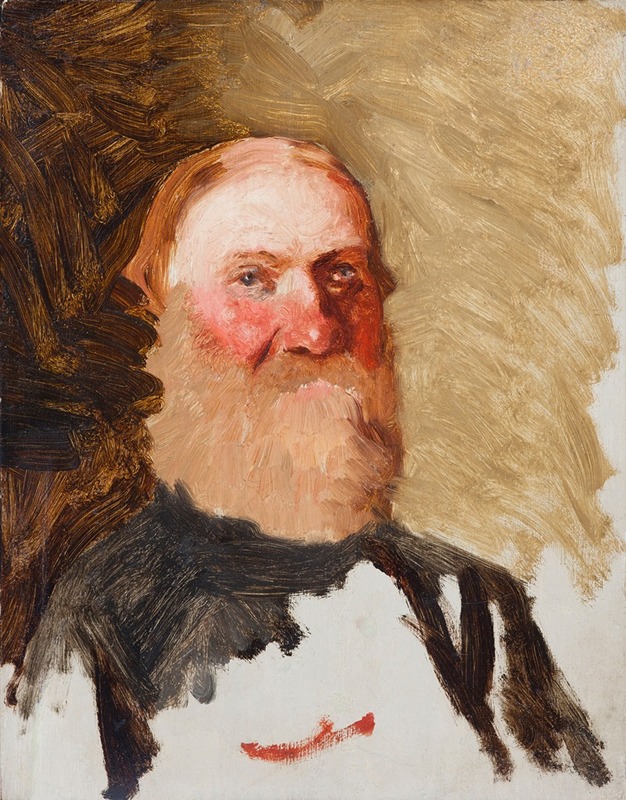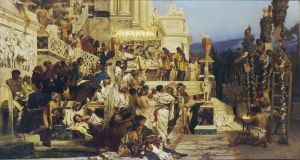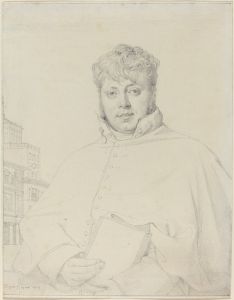
Head of a Bearded Man
A hand-painted replica of Henryk Siemiradzki’s masterpiece Head of a Bearded Man, meticulously crafted by professional artists to capture the true essence of the original. Each piece is created with museum-quality canvas and rare mineral pigments, carefully painted by experienced artists with delicate brushstrokes and rich, layered colors to perfectly recreate the texture of the original artwork. Unlike machine-printed reproductions, this hand-painted version brings the painting to life, infused with the artist’s emotions and skill in every stroke. Whether for personal collection or home decoration, it instantly elevates the artistic atmosphere of any space.
Henryk Siemiradzki was a Polish painter known for his large-scale historical and mythological scenes, often characterized by their dramatic compositions and meticulous attention to detail. However, specific information about a painting titled "Head of a Bearded Man" by Siemiradzki is not readily available in historical records or major art collections. Siemiradzki's oeuvre primarily includes grand canvases depicting scenes from antiquity, biblical stories, and genre scenes set in the classical world, which were highly popular in the late 19th century.
Siemiradzki was born in 1843 in the Russian Empire, in what is now Ukraine. He studied at the Imperial Academy of Arts in Saint Petersburg and later in Munich, where he was influenced by the academic style of painting. His works are noted for their vibrant color palettes and the use of light, often drawing comparisons to the works of Lawrence Alma-Tadema and other academic painters of the time.
One of Siemiradzki's most famous works is "The Feast of Attila," which showcases his ability to depict historical narratives with vivid detail and emotional depth. His paintings often explore themes of decadence and moral reflection, set against the backdrop of ancient Rome or Greece. Siemiradzki's attention to historical accuracy and his ability to capture the textures of fabrics, architecture, and human expressions made his works highly sought after during his lifetime.
Despite his success, Siemiradzki's work fell out of favor with the advent of modernist movements in the early 20th century, which favored abstraction and a break from traditional academic styles. However, there has been a resurgence of interest in his work in recent years, as scholars and art enthusiasts have sought to re-evaluate the contributions of academic painters to the broader history of art.
Siemiradzki's paintings are housed in several major museums, including the National Museum in Warsaw and the Tretyakov Gallery in Moscow. His legacy is also preserved through his influence on Polish art and his role in the cultural exchange between Eastern and Western Europe during his time.
Without specific information on "Head of a Bearded Man," it is challenging to provide a detailed analysis or description of the painting. If it exists, it might be a lesser-known work or possibly a study or sketch rather than a finished piece. For those interested in Siemiradzki's work, it is recommended to explore his more well-documented paintings and contributions to the art world of the 19th century.
In summary, while Henryk Siemiradzki is a significant figure in the realm of 19th-century academic painting, specific details about a painting titled "Head of a Bearded Man" are not available in existing art historical resources. Therefore, further research or discovery would be necessary to provide a comprehensive overview of this particular work.


















